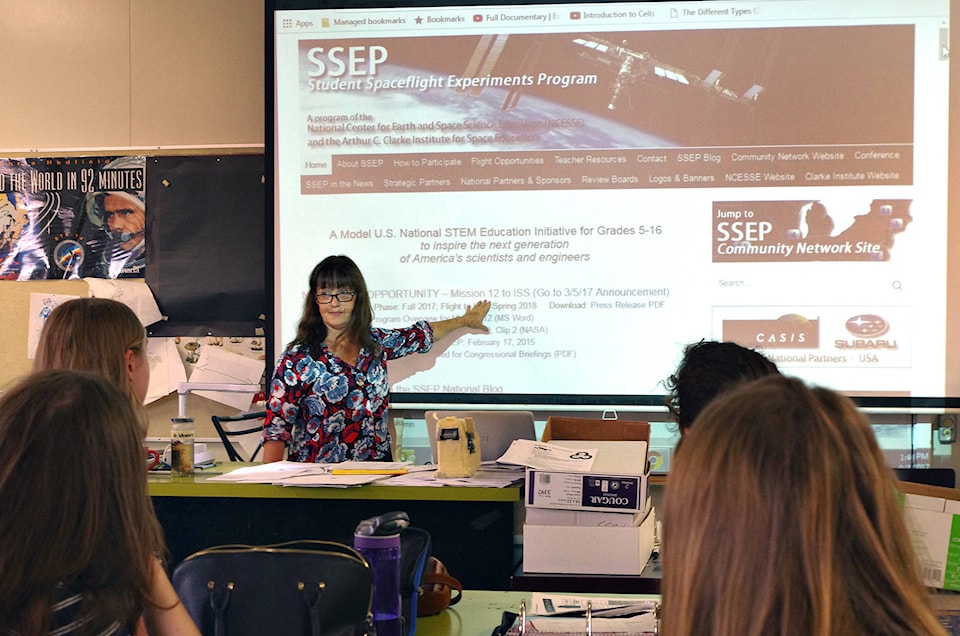It’s not quite rocket science, but a project Nanaimo students and teachers have taken on is about as close as it gets.
With the start of the school year Nanaimo District Secondary School students have embarked on a mission to design a science experiment to be carried out in the micro-gravity environment aboard the International Space Station next spring.
The project is part of the Student Spaceflight Experiments Program, offered by the U.S. National Center for Earth and Science Education and the Arthur C. Clarke Institute for Space Education to inspire a new generation of scientists and engineers.
Teams of NDSS students will compete to design an experiment to be chosen by NASA engineers and conducted aboard the International Space Station.
Just one team’s design will be chosen, but the competition will potentially involve hundreds of students across the school district, plus Vancouver Island University professors, local scientists, engineers and mathematicians who will be called upon to help mentor and advise the students.
“Nanaimo’s filled with retired scientist, engineers and mathematicians and then they can be mentors to the students,” said Mary Anne Perkins, an NDSS biology teacher and the project’s science coordinator.
Perkins said it’s an opportunity for the students to gain real world experience on a large science project.
“It just opens up doors for these students that would never have a chance, and you do know that at NDSS we’re generally inner city, low-income students that would never have such an opportunity,” she said.
The spaceflight experiments program dovetails with new teaching curriculum changes that focuses on inquiry-based learning that causes students to seek knowledge to explain the things they observe happening, instead of having information force-fed to them. The new curriculum also educates by integrating the elements of STEAM – science, technology, engineering, art and mathematics.
“This just perfectly parallels with the new curriculum,” Perkins said.
One early hiccup was the $24,000 U.S. fee that had to be raised to fly the experiment. A gofundme fundraiser has drawn a few hundred dollars in public donations, but much more money has come in from the Nanaimo school district, Magellan Aerospace, Blue Moon Fund, B.C. Hydro and other contributors. Funds are still being raised for the mission launch costs and to fly the winning student team to Kennedy Space Centre to watch the launch of the SpaceX Falcon 9 rocket that will ferry the experiment package to the ISS.
“Then they get their research back and they write it up and they get to present it at the [Smithsonian National Air and Space Museum] … so it’s a big thing,” Perkins said.
About 20 teachers are currently involved in the program, which is being co-ordinated by three directors that include Perkins as science director, Martha Parker, literacy co-ordinator and Beverly Long, arts co-ordinator, who will oversee the competition to design two versions of the mission patch, which will be taken on by Nanaimo’s elementary schools and NDSS students.
Now the pressure is on to get the project off the ground to be ready for launch from Kennedy Space Centre in Florida in spring 2018.
“If anybody has math, engineering, any expertise – they don’t have to be retired, they can be working – and they would like to be mentors for students to actually help them with ideas … and we also need people to help with proposals … the English part of it, not just the science part because you also have to be a good writer,” Perkins said.
To get involved with the program, contact Perkins at maperkins@sd68.bc.ca.
